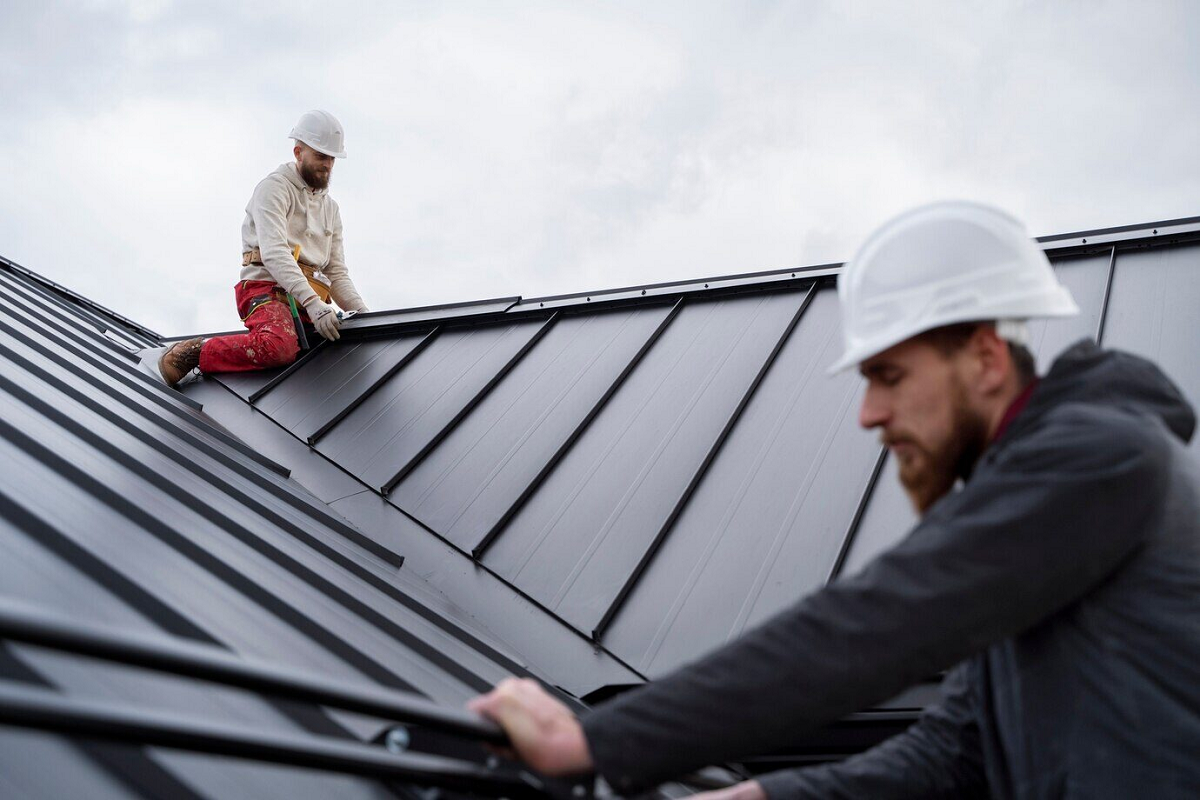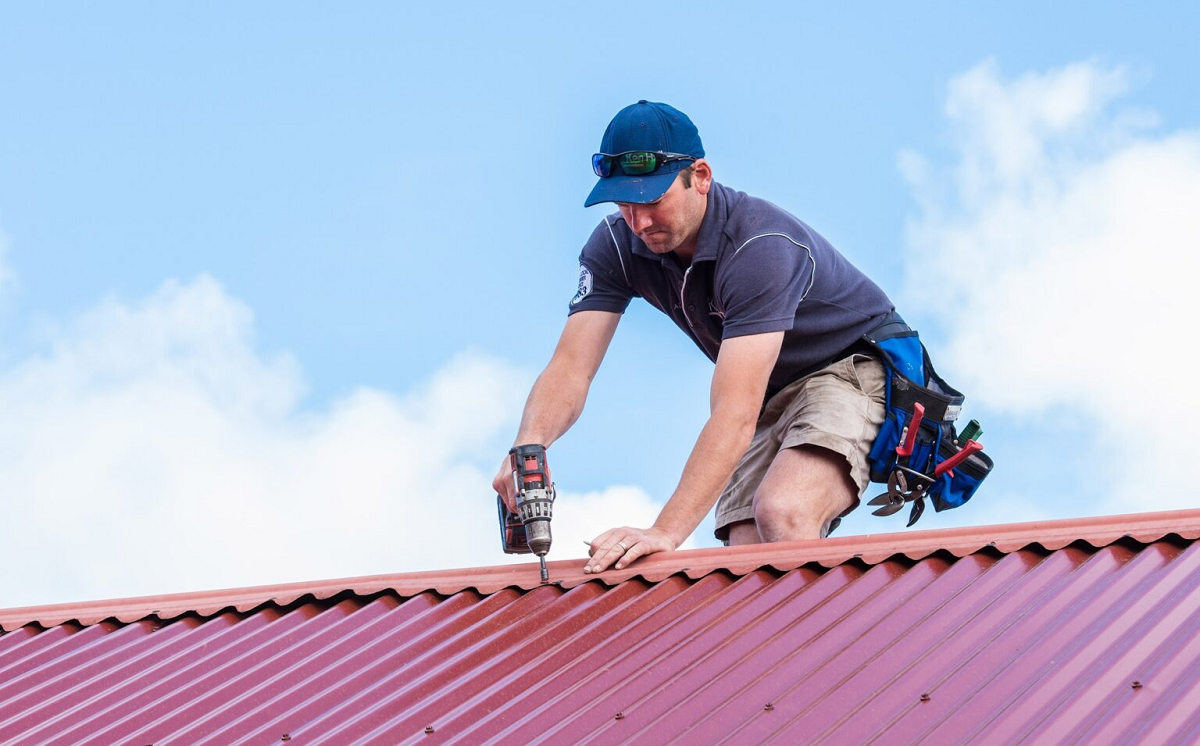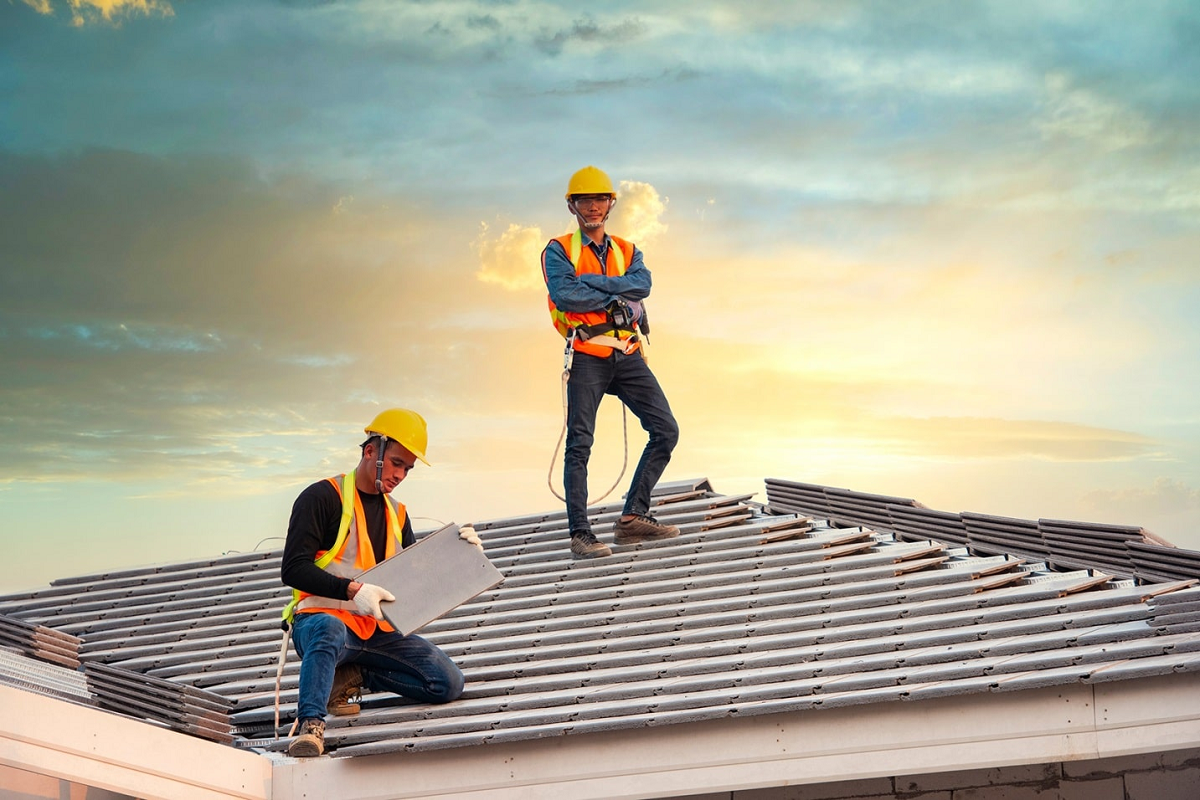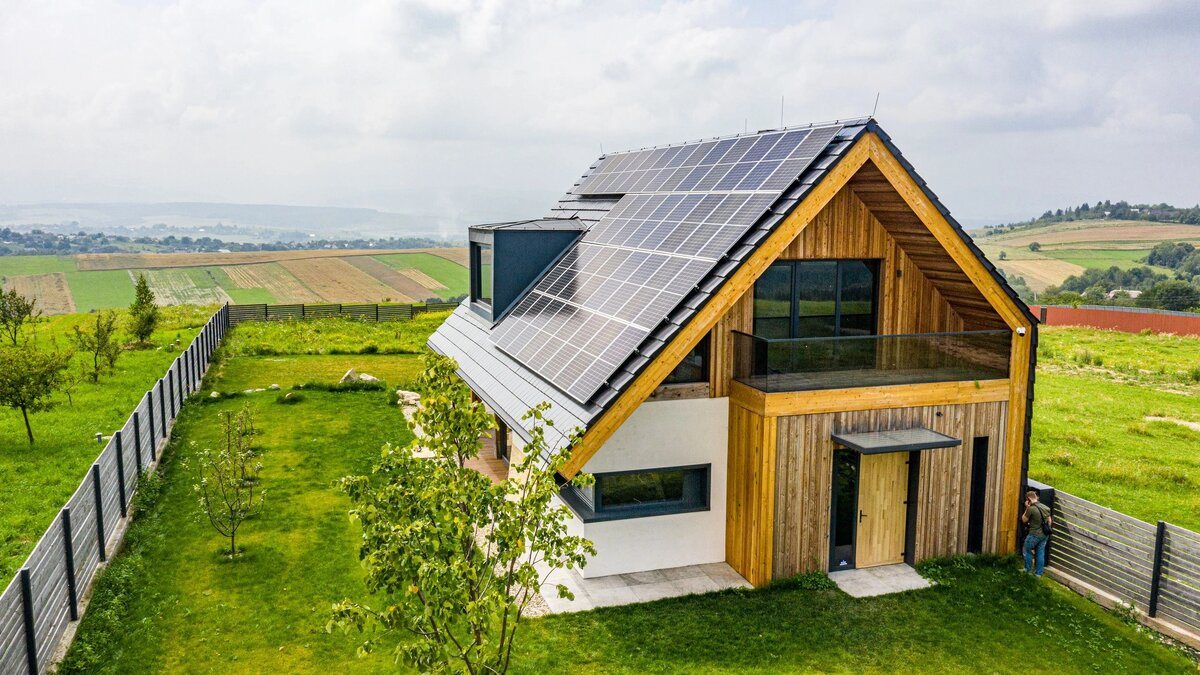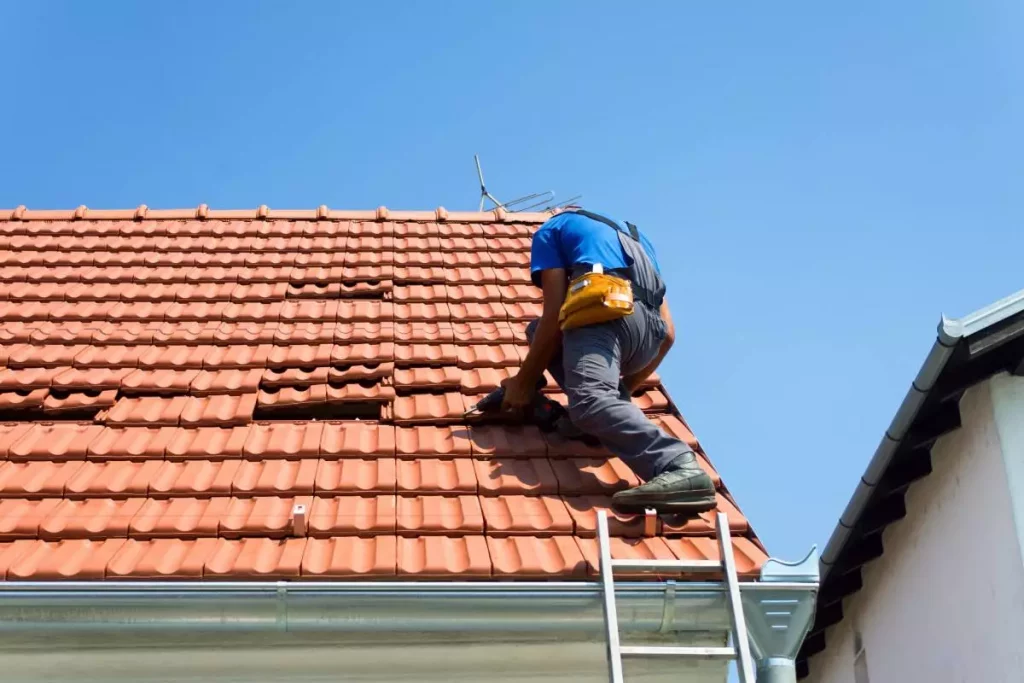Roofing Safety Gear: A Must-Have For Avalon Professionals
In the dynamic world of roofing, where craftsmanship meets the elements, ensuring the safety of professionals is paramount. The rooftop is both a workplace and a unique environment that demands meticulous attention to safety protocols. This blog delves into a crucial aspect of the roofing industry – the indispensable role of safety gear, specifically tailored for the skilled professionals navigating Avalon's roofing landscapes.
Roofing, inherently fraught with risks, necessitates a comprehensive understanding of safety measures to safeguard the well-being of workers. Avalon, with its distinct climate and challenging projects, demands a specialized approach to roofing safety. This blog serves as a guide for Avalon roofing professionals, shedding light on the must-have safety gear that goes beyond mere compliance, offering a shield against the diverse challenges posed by Avalon's roofing projects.
We begin by exploring the significance of roofing safety, backed by eye-opening statistics and legal considerations. From personal protective equipment (PPE) to fall protection gear, we'll detail the essentials every Avalon professional should have in their arsenal. Tailoring safety gear to Avalon's unique requirements will be a focal point, recognizing the need for specialized equipment in this picturesque yet demanding setting.
As we embark on this journey, we'll delve into the critical aspects of training, education, and industry best practices, underlining the commitment to a culture of safety. Real-life case studies will illustrate the tangible impact of safety gear, emphasizing its role as a proactive measure rather than a reactive one. Join us in this exploration of roofing safety gear – a shield that not only protects lives but ensures a robust and secure foundation for Avalon's roofing professionals.
The Significance Of Roofing Safety
The significance of roofing safety cannot be overstated in an industry where workers are regularly exposed to various hazards. Roofing is inherently risky, with workers often operating at elevated heights, handling heavy materials, and working in challenging weather conditions. The statistics on roofing accidents and injuries underscore the need for a robust safety culture within the industry. According to the Occupational Safety and Health Administration (OSHA), falls from roofs account for a significant number of construction-related fatalities each year.
Prioritizing safety in roofing not only prevents accidents and injuries but also contributes to the overall well-being of workers. The physical demands of roofing work, combined with the potential for accidents, make safety measures crucial for maintaining a healthy and productive workforce. Moreover, the financial and legal ramifications of workplace injuries can be substantial for both employers and employees.
In addition to the human cost, there are legal and regulatory considerations that underscore the significance of roofing safety. Non-compliance with safety standards can result in fines, legal actions, and damage to a company's reputation. Therefore, investing in comprehensive safety measures, including the proper use of safety gear, is not just a moral imperative but also a strategic business decision for roofing professionals and companies. By prioritizing safety, the roofing industry can create a work environment that minimizes risks, enhances worker satisfaction, and ultimately ensures sustainable and successful operations.
Essential Roofing Safety Gear
Hard Hats:
- Purpose: Protects the head from falling objects and impact.
- Considerations: Should be ANSI-approved and fit securely.
Safety Glasses or Goggles:
- Purpose: Shields eyes from debris, dust, and potential eye injuries.
- Considerations: Should provide a snug fit and be impact-resistant.
Hearing Protection:
- Purpose: Guards against loud noises from machinery and tools.
- Considerations: Options include earplugs or earmuffs; choose based on the noise level.
Respirators:
- Purpose: Protects against inhalation of harmful fumes, dust, and particles.
- Considerations: Choose the appropriate type based on the nature of roofing materials and potential hazards.
Harnesses:
- Purpose: Essential for fall protection, especially when working at heights.
- Considerations: Should meet safety standards, be properly fitted, and regularly inspected.
Lanyards:
- Purpose: Connects the harness to anchor points, preventing falls.
- Considerations: Choose the right length and ensure they have shock-absorbing features.
Anchor Points:
- Purpose: Provides a secure attachment point for lanyards.
- Considerations: Must be properly installed and capable of supporting the required load.
Non-Slip Boots:
- Purpose: Reduces the risk of slipping on wet or uneven surfaces.
- Considerations: Should have good traction, be water-resistant, and provide ankle support.
Steel-Toed Boots:
- Purpose: Protects toes from heavy objects and equipment.
- Considerations: Should meet safety standards and be comfortable for long periods of wear.
Gloves:
- Purpose: Protects hands from cuts, abrasions, and exposure to harsh materials.
- Considerations: Choose gloves appropriate for the specific roofing tasks, such as cut-resistant gloves for handling sharp materials.
These safety gear items form a comprehensive set to ensure the well-being of roofing professionals during their work. It's important to regularly inspect and maintain the gear to ensure its effectiveness and replace any damaged items promptly. Additionally, proper training on the correct usage of this safety gear is crucial for preventing accidents and injuries on the job.
Training And Education
A. Importance of Proper Training in Using Safety Gear
Foundation of Safety Knowledge
a. Introduction to basic safety principles
b. Understanding the risks associated with roofing work
c. Importance of a safety-first mindset
Familiarization with Safety Gear
a. In-depth training on the proper use of personal protective equipment (PPE)
b. Hands-on sessions for donning and doffing safety gear
c. Understanding the limitations and specifications of each piece of equipment
Emergency Response Training
a. Procedures for responding to accidents or emergencies on the roof
b. Evacuation plans and protocols
c. First aid and CPR training
B. Ongoing Education for Staying Updated on Safety Standards
Regulatory Compliance
a. Keeping abreast of local, state, and federal safety regulations
b. Understanding changes in safety standards and guidelines
c. Ensuring that all safety practices align with the latest industry standards
Regular Refresher Courses
a. Periodic training sessions to reinforce safety protocols
b. Addressing common lapses or mistakes in safety practices
c. Providing updates on new safety gear and technologies
Continuous Improvement Culture
a. Encouraging feedback on safety practices from the workforce
b. Regular safety meetings to discuss near misses or potential hazards
c. Creating a culture that values ongoing learning and improvement
C. The Role of Avalon-Specific Safety Training Programs
Tailoring Training to Local Challenges
a. Addressing specific weather conditions in Avalon
b. Training for unique challenges presented by Avalon's architectural landscape
c. Case studies highlighting safety incidents specific to the region
Collaboration with Local Safety Experts
a. Partnerships with safety professionals familiar with Avalon's roofing environment
b. Guest lectures and workshops by experts in Avalon-specific safety concerns
c. Inclusion of local safety regulations and best practices in training programs
Access to Resources and Support
a. Providing resources such as manuals, videos, and online modules
b. Establishing a dedicated safety hotline or support system
c. Ensuring that all training materials are readily accessible to Avalon professionals.
Industry Best Practices
Regular Safety Inspections:
- Implement routine inspections of all roofing equipment and safety gear.
- Regularly assess the condition of ladders, harnesses, and other fall protection equipment.
Training Programs:
- Provide comprehensive safety training programs for all roofing professionals.
- Include specific modules on the proper use of safety gear and emergency procedures.
Tailored Safety Plans:
- Develop customized safety plans for each roofing project, taking into account the unique challenges and conditions of the worksite.
- Ensure that all team members are familiar with and adhere to the safety plan.
Collaboration and Communication:
- Foster open communication channels between workers, supervisors, and safety officers.
- Encourage reporting of any safety concerns or issues promptly.
Use of Personal Protective Equipment (PPE):
- Enforce the consistent use of appropriate PPE, such as hard hats, safety glasses, gloves, and respiratory protection.
- Regularly check and replace damaged or worn-out PPE.
Fall Protection Measures:
- Prioritize the use of fall protection equipment, including harnesses, lanyards, and guardrails.
- Ensure proper training on the correct setup and use of fall protection systems.
Weather Monitoring:
- Keep a close eye on weather conditions, especially in regions like Avalon with variable climates.
- Suspend work during adverse weather conditions to prevent accidents.
Emergency Response Planning:
- Develop and communicate emergency response plans, including evacuation procedures and first aid protocols.
- Conduct regular drills to ensure that all team members are familiar with emergency procedures.
Proper Equipment Usage:
- Train workers on the correct usage of tools and equipment to minimize the risk of accidents.
- Regularly inspect and maintain all roofing equipment to ensure safe operation.
Continuous Education:
- Stay updated on the latest safety regulations and industry best practices.
- Provide ongoing education and training opportunities for roofing professionals to enhance their safety knowledge.
Supervision and Accountability:
- Implement a system of supervision to ensure that safety measures are consistently followed.
- Hold workers accountable for adhering to safety protocols through regular performance evaluations.
Documentation and Reporting:
- Keep detailed records of safety inspections, training sessions, and any incidents.
- Report and investigate all accidents or near misses to identify areas for improvement.
Implementing these best practices can contribute to a safer working environment for roofing professionals in Avalon and beyond.
In conclusion, prioritizing roofing safety gear is not just about compliance; it's a fundamental responsibility that profoundly impacts the well-being of Avalon professionals. By embracing essential safety gear, tailoring recommendations to Avalon's challenges, and adopting industry best practices, we create a culture where safety is paramount.
Investing in safety measures is an investment in the longevity of both the workforce and roofing projects. The outlined industry best practices, such as regular inspections, collaboration, and continuous education, serve as a roadmap for creating a robust safety framework. Tailored safety plans for Avalon's conditions demonstrate a commitment to addressing specific challenges directly.
Beyond compliance, the benefits of investing in roofing safety extend to accident prevention, workforce well-being, and project success. Let's view safety not as an expense but as an investment with returns measured in lives protected and injuries prevented.
As Avalon professionals, let's collectively commit to excellence through collaboration, education, and adherence to industry best practices. By consistently implementing these measures, we ensure that every roofing project in Avalon stands as a testament to skill, craftsmanship, and a shared value for the safety and health of those making it possible.

